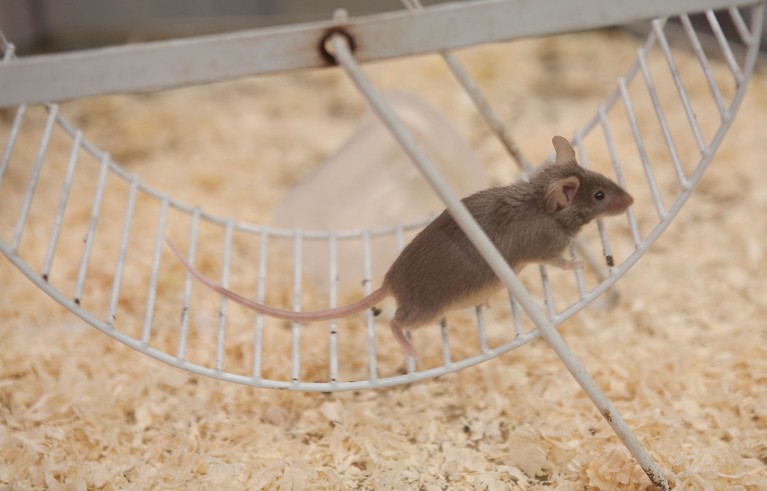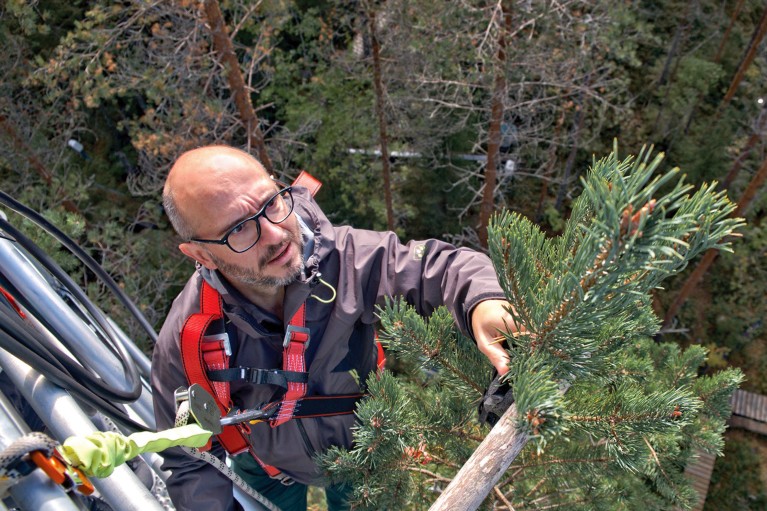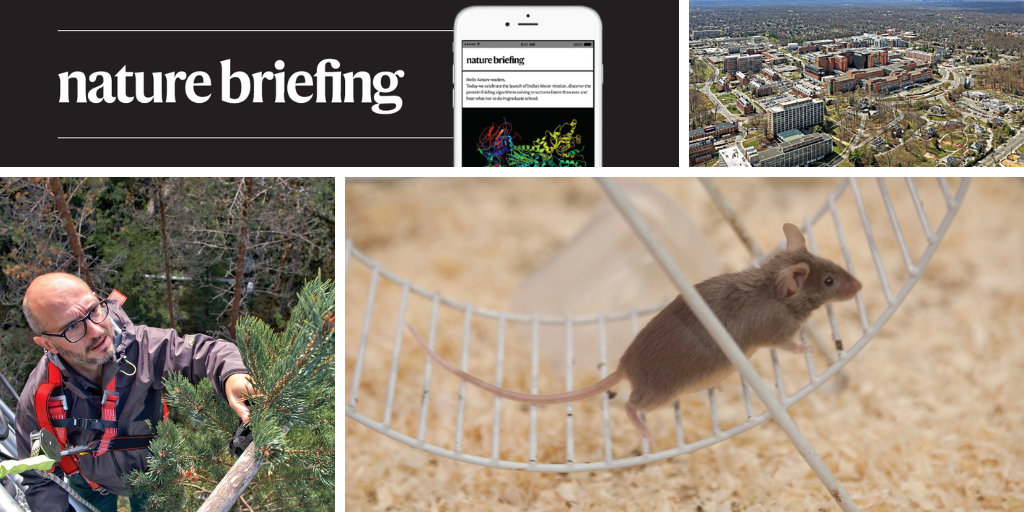Hello Nature readers, would you like to get this Briefing in your inbox free every day? Sign up here.

Neurotransmitters in the amygdala might be why we have anxious responses in harmless situations.Credit: Owen Franken/Corbis via Getty
Big bundles of neurons that disrupt memory formation develop in the brains of mice when they’re stressed, making them fearful in harmless situations. Researchers played stressed and unstressed mice an unthreatening medium-pitched noise. Later, they played them a high-pitched noise and gave them a short electric shock. The stressed mice formed larger memory-encoding groups of neurons, which were reactivated by both noises, suggesting they couldn’t distinguish between neutral and fearful events. The results might help to explain why stressed people often feel threatened in safe environments.
Proposals from both chambers of the US Congress and comments made by the incoming administration of US president-elect Donald Trump indicate that the National Institutes of Health (NIH) is poised for reform. The proposals include halving the number of institutes and replacing a subset of the agency’s staff members, but what will actually happen is unclear. The NIH has launched a series of meetings at which an advisory group of insiders and external scientists will consider each proposal and offer its own recommendations.
To cope with the demands of a bigger brain, human dopamine neurons express more genes that boost the activity of damage-reducing antioxidants than do those of primates. This might protect neurons from the oxidative damage caused by the energy-intensive process of making dopamine. Some of these protective mechanisms appear to possibly be absent in people with neurodegenerative disorders such as Parkinson’s disease — suggesting new lines of research to understand the conditions.
Reference: bioRxiv preprint (not peer reviewed)
An artificial intelligence (AI) model called Evo can predict how small changes to bacterial and viral genomes can affect the organism’s fitness, and even design whole new microbial genomes. Trained on 300 billion nucleotides of sequence information, Evo bested previous DNA-trained models at predicting the effect of mutations on protein performance. It also designed new versions of the Cas9 enzyme used in CRISPR genome editing, some of which were as good at cutting DNA as a commercially-available version. However, the AI did ‘hallucinate’ several dud proteins.
Features & opinion
As the saying goes, failure to prepare is preparing to fail. To avoid falling into that trap, we’ve compiled some of the questions hiring managers love to ask in scientific job interviews. We’ve broken them down to help you understand why hirers are asking certain questions, from your knowledge of the field to where you see yourself in five years time, and what they want to hear from you.
Neurologist Guy Leschziner’s new book maps ‘sins’ such as gluttony and lust onto medical case-histories to explore how ‘bad’ behaviour can be driven by biological factors. “The stories in Seven Deadly Sins reveal that, at least in some cases, people have little control over their actions because of factors such as genetics, developmental differences, medications, head trauma or a neuropathological condition,” writes neurologist Sara Manning Peskin in her review. The cases raise interesting questions about free will and personal responsibility.
Where I work

Albert Porcar Castell is a forest scientist at the University of Helsinki.Credit: Juho Aalto
Forest scientist Albert Porcar Castell ventures high into trees to measure the light emitted by leaves or needles in the far-red part of the spectrum. “Almost every chlorophyll-containing organism creates this light,” he says. “The intensity is very low — only about 1% of absorbed light is emitted as fluorescence — but its variations make the signal informative.” Eventually, he says, fluorescence data obtained remotely, from drones, aircraft or satellites, might help understand how trees are responding to a rapidly changing environment. (Nature | 3 min read)
On Friday, Leif Penguinson was exploring the Swiss National Park in the Western Rhaetian Alps. Did you find the penguin? When you’re ready, here’s the answer.
Thanks for reading,
Flora Graham, senior editor, Nature Briefing
With contributions by Jacob Smith
Want more? Sign up to our other free Nature Briefing newsletters:
• Nature Briefing: Careers — insights, advice and award-winning journalism to help you optimize your working life
• Nature Briefing: Microbiology — the most abundant living entities on our planet — microorganisms — and the role they play in health, the environment and food systems
• Nature Briefing: Anthropocene — climate change, biodiversity, sustainability and geoengineering
• Nature Briefing: AI & Robotics — 100% written by humans, of course
• Nature Briefing: Cancer — a weekly newsletter written with cancer researchers in mind
• Nature Briefing: Translational Research — covers biotechnology, drug discovery and pharma


